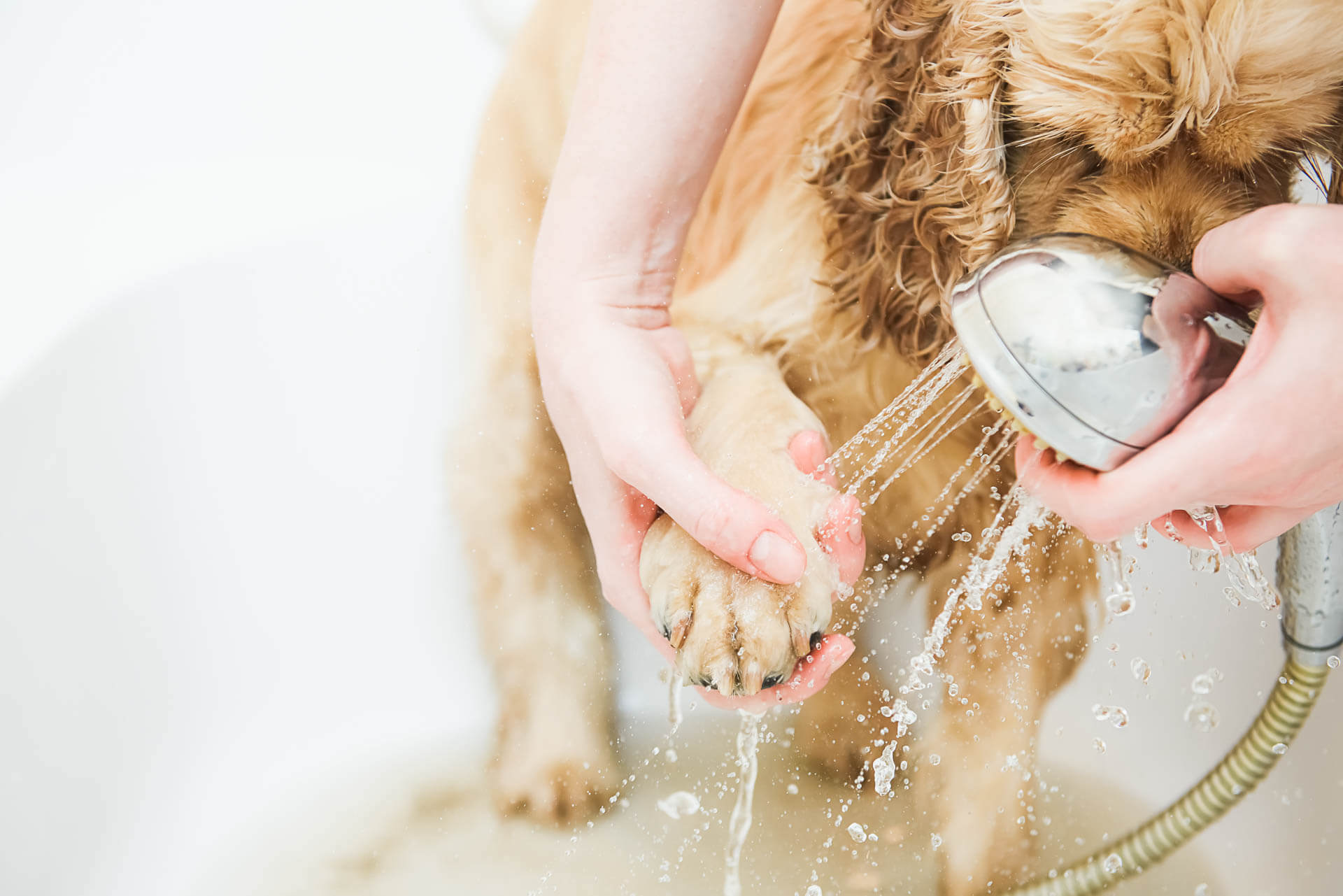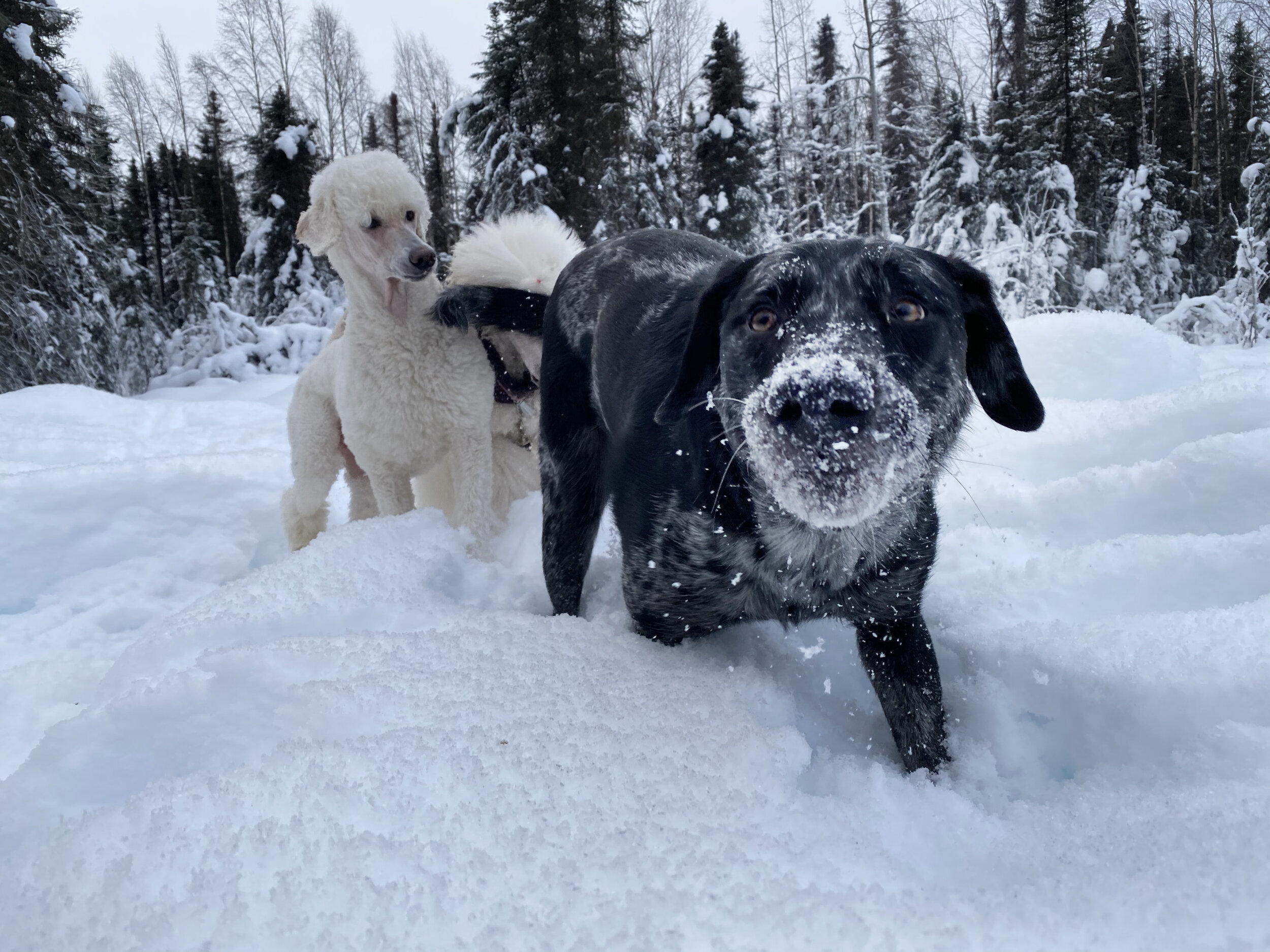Table of Contents
Sometimes dogs’ paws get cold, just like our hands and feet do. It’s usually nothing to worry about and you’ll just need to monitor it for any common patterns.
However, if your dog’s paws are consistently cold, even in warm weather, it could be a sign of a circulation issue that would need to be checked out by a vet.
What Does It Mean When My Dog’s Paws Are Cold?
If your dog’s paws are cold, there’s generally nothing to worry about when this is the only symptom they have.
There is the possibility that this is one symptom of an underlying health issue. However, just because your dog has cold paws, it doesn’t necessarily mean that there is a bigger problem.
If your dog has any of the following symptoms as well, then you should consider checking with a vet:
- Swollen legs
- Difficulty walking
- Pale gums
- Trouble standing
- Collapsing
- Respiratory problems
It is also key to remember, that during colder temperatures if you are walking your dog outside, they will have colder paws than usual.
If they feel really cold, you can now buy dog socks and boots to keep your friend warm during the winter. It might take a few attempts to get your dog to wear these, however.

How Can You Tell Your Dog’s Paws Are Cold?
To check if your dog’s paws are cold, feel them with your hand and check if they feel unusually cold (much colder than your hands).
To check for any further problems or to see if your dog is feeling unwell, you can use a rectal thermometer. The normal range should be between 101 and 102.5.
You can also do a check on their pulse by placing it at the back of their thigh. If anything seems unusual, consult a vet.
If your dog is showing signs of cold paws, it can be a sign of blood flow problems. This can sometimes be a health condition associated with the cardiovascular system of your pet.
It can also be linked to a heart problem but this is quite rare.
How Cold Is Too Cold For My Dogs Paws?
Whilst there isn’t an exact temperature to not allow your dog outside, there are some factors that will give you an answer as to what is too cold.
Dogs fair better than us humans in the cold but they still feel it. Despite what you might hear, dogs do actually get cold due to becoming more domesticated over the years.
They aren’t wolves that are used to being outside continuously.
If there is snow on the ground outside, this can be quite uncomfortable for your dog. When you have an older dog, they will feel the cold more than a younger dog.
If there is moisture outside this will also lower the body temperature of your dog and they will quickly become colder.
When the conditions outside are like the above, it might be worth considering a shorter walk than normal and making your dog wear a coat.

Is The Cold Dangerous For My Dog?
Be aware of chemicals that are being used in winter such as anti-freeze. Anti-freeze can burn your dog’s paws and should be wiped off as soon as possible.
You also need to factor in any current health conditions your dog might have or is likely to get. For example, if you have a dog breed that is likely to develop hip dysplasia, colder temperatures will aggravate your dog’s joints.
It is important to remember that puppies aren’t great in cold conditions either. As they are still developing, they will feel the cold on their feet and struggle to regulate their body temperature.
When the temperatures outside are below 0 degrees, you shouldn’t be taking your dog for a walk as this is considered too cold.
Should Dog Paws Be Warm?
Dogs actually have a higher body temperature than humans but their paws should only be a little warmer than our hands. If they seem incredibly warm in comparison to your hands, your dog may have a fever.
If you suspect a fever in your dog check for yellow or green nasal discharge. Infections are the main causes of fever and checking your dog’s nose is a good indicator.
If your dog has an infection you should consult your vet as soon as possible to give your dog the best care.
After, take a look inside your dog’s mouth. When the dog is calm, inspect their gums and keep an eye out for warm and dry gums that appear more red than normal. Red gums can be a sign of a fever.
Lastly, place your dog on his back feel around the armpits and groin area. If you spot that it is incredibly warm or appears swollen, there’s a good chance your dog has a fever.

How Can I Cool Down My Dog’s Fever?
If you’ve got a bit of a wait time before you can see your vet. There are a few things you can do to cool your dog down with a fever.
- Encourage your dog to drink cool water in small amounts
- Use cotton wool balls soaked in cold water and apply to warm areas. Also, apply to your dog’s paws as this can cool their body
- Give your dog a cool bath
Unless specifically instructed by your vet, do not give your dog medication such as ibuprofen or paracetamol. These can be incredibly toxic to dogs and can make things worse.
When your dog’s temperature drops down to 103 Fahrenheit, this is an acceptable temperature and you shouldn’t attempt to lower your dog’s temperature further.
Why Does My Dog Feel Cold To The Touch?
A dog’s temperature is around 101 to 102.5 degrees Fahrenheit. Anything outside this and there could be a health condition that needs investigating.
We sometimes get the impression that because a dog has fur, they don’t feel the cold. Unfortunately, whilst they are resistant animals, they definitely do.
When the temperature drops in winter, they will certainly feel it just like us humans. If your dog feels cold to touch, they are most likely feeling very cold because of the drop in temperature.
If you can, turn up the heat in your home to make your pet feel more comfortable and this will generally warm them up. You can also offer them blankets to increase their comfort and speed up the warming process.
Make sure you buy plenty of clothing for pets. You can buy jackets, socks, and even jumpers. If your dog seems to be susceptible to the cold, you could consider buying them a jacket for when the temperatures are low.
If it doesn’t seem too cold in your home it might not be just cold weather bothering your dog. Always keep a pet thermometer handy as you can check for signs of a fever which can come on quickly.
The thermometer needs to be inserted into your dog’s rectum. Your dog certainly won’t like this so it might be worth having someone around to keep them still. If your dog’s temperature is below 99 degrees you need to seek help from a vet.
This could be a sign of hypothermia which can be fatal.
There are a few health conditions that could cause your dog to feel cold to the touch. Hypothyroidism is a condition that causes heat loss to the body and this would need to be ruled out by a vet.

Do Dogs Get Cold?
It is a misconception that dogs do not feel the cold. Whilst their wolf ancestors were able to freely roam in cold conditions, dogs today don’t share that feral resistance.
Over the years, dogs have been family pets and certainly feel the cold like we do.
Whilst dogs do have some protection with their fur when the temperatures drop below freezing, they do need some support from us to keep them comfortable.
How Can I Keep My Dog Warm In Winter?
A warm bed during the winter nights with plenty of blankets will protect your dog from the cold. You should also inspect the area for any drafts that might affect your dog at night.
Consider moving them upstairs near you or to a warmer part of the house. You can also purchase heatable mats that will last the duration of the night and keep your pet warm and comfortable.
When you are going on a walk, providing the temperature isn’t below freezing, buy a jacket for your dog.
It may take a bit of time to get your dog accustomed to wearing this but after a few attempts, your dog won’t mind.
You should definitely consider a jacket or jumper for your dog if you have a slim breed of dog. Greyhounds and Whippets will certainly feel the cold more than other breeds because of their streamlined coat.

How To Look After My Dog’s Paws in Cold Weather
When it’s cold outside, our dog’s paws need special attention. Dog’s paws in winter can be subject to frostbite and the pads can crack easily.
If your dog’s paws are cracked it is easier for objects to get inside such as sharp stones and glass.
You should also be on the lookout for anti-freeze products. These chemicals can burn your dog’s feet if they walk over it on the ground. Be sure to wipe this off quickly if your dog comes into contact with anti-freeze.
After your walk, check the feet for cuts and cracks and remove any snow or frost. For added protection, you can now buy special dog boots for walking.
These aren’t for every dog, however. If your dog allows you to put them on, these will make sure your dog doesn’t suffer any cuts or burns from the snow.
Whilst we love to exercise our dog and they thank us for this, during cold winter months this should be kept to a minimum. If it is cold outside, consider only a brief walk of 30 minutes and refrain from fully exerting your dog.
When your dog experiences intense exercise outside in cold temperatures, this can put more strain on their joints.
If you have a breed that is more likely to develop joint problems such as hip dysplasia, this can bring on the condition sooner than intended.
